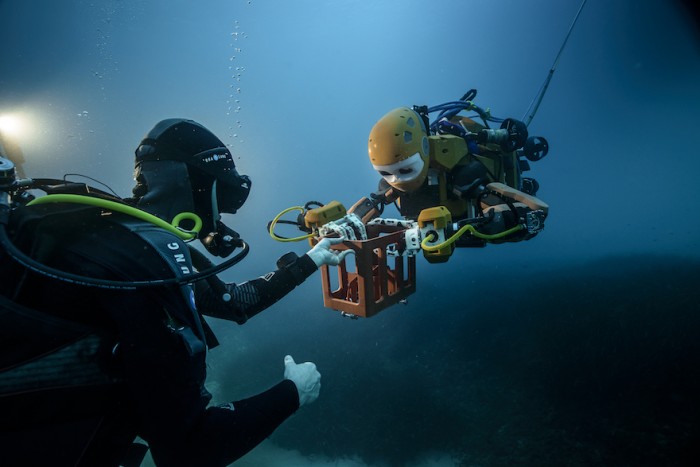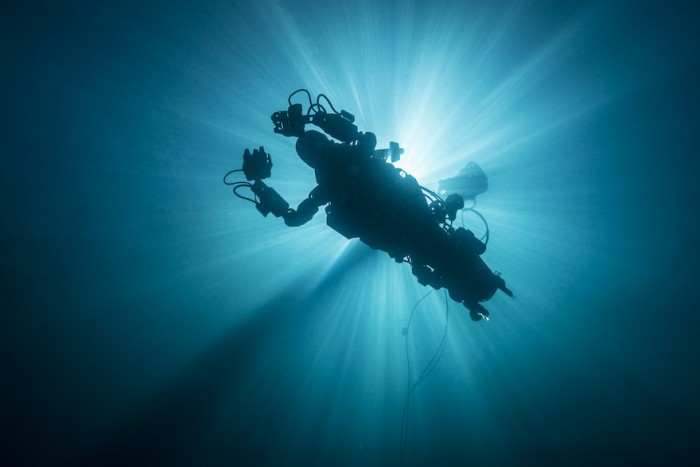OceanOne, a humanoid diving robot created by researchers at Stanford University, discovered the sunken treasure of King Louis XIV’s flagship on its maiden voyage. The wrecked vessel sank 20 miles off the southern coast of France in 1664 and had remained untouched until deep-sea archaeologists sent their robo-mermaid, the first of its kind, to disturb the forgotten trove of treasures and artifacts.
OceanOne was born of out a need to study coral reefs in the Red Sea, deep sea areas out of reach for human divers. Stanford researchers describe it as a successful marriage of robotics, artificial intelligence, and haptic feedback systems.
“We connect the human to the robot in very intuitive and meaningful way. The human can provide intuition and expertise and cognitive abilities to the robot,” said Oussama Khatib, professor of computer science at Stanford. “The two bring together an amazing synergy. The human and robot can do things in areas too dangerous for a human while the human is still there.”
At around five feet long, OceanOne features a head with stereoscopic vision that shows its operator exactly what it sees. The features locked in its two fully articulated arms are what set OceanOne apart. According to Stanford News, each wrist is fitted with force sensors that allow the human to feel whether the robot is grasping something firm and heavy or light and delicate. This haptic feedback makes the bot adept at the delicate study of coral reef research and precise tasks like placing underwater sensors.
“You can feel exactly what the robot is doing,” Khatib said. “It’s almost like you are there; with the sense of touch, you create a new dimension of perception.”
Khatib and the team involved in OceanOne’s development hope to build more units, which would work in concert during a dive.







